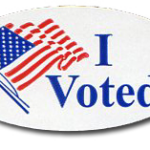Twenty-eight of America’s 100 largest cities voted for mayor on Tuesday, in addition to scores of smaller cities across the country. Most of these elections were overshadowed by high profile governor’s races in Virginia and New Jersey and results from some big cities, but it’s worth thinking about what this week’s municipal elections can teach us about how we can work to strengthen our democracy.
Mayors — and other other local leaders elected this week including city council and school board members — make decisions that touch our lives every single day. They command local police departments, set policy for public schools, and make decisions that influence where and how we live, work, learn, play, and get around.
Despite their importance, however, many local leaders elected on Tuesday were not elevated to public office by large majorities of residents representative of their cities’ diverse populations. Instead, they were elected by the fraction of voters who tend to participate in lower profile elections and consistently skew much older than the population as a whole.
Boston’s mayoral election made history in many ways, but still only 29% of registered voters participated. In Cleveland’s first mayoral election without an incumbent running in 20 years, turnout was 23%. In Detroit, 19%. Some cities did buck the trend; 55% of voters participated in Minneapolis.
The Who Votes for Mayor project at Portland State University completed the most comprehensive recent analysis of participation in local elections in 2016. The study found that many large cities across the United States struggle to reach 30 percent of eligible citizens turning out to vote for leaders like mayors and city councilors.
Our democracy works best when citizens are both informed and engaged, when voting is accessible without barriers for all, particularly those who have historically been excluded from political participation. When more citizens participate in elections, the results are more likely to reflect a true will of the majority.
According to Who Votes for Mayor research, the number one factor in predicting someone’s likeliness to vote in a local election is their age, and the effect is far more pronounced on the local level than in federal elections.
In the nation’s 30 largest cities, the gap between the median age of voting eligible residents and the age of those actually casting ballots averaged 15 years in the elections that researchers studied. Those ages 65 and older vote at dramatically higher levels than those ages 18-34 in local elections. Measured by “Generational Clout,” a statistic that compares voting rates between age groups, 65+ year olds average seven times the Generational Clout of 18-34 year olds in America’s 30 largest cities.
These trends have real implications for local policymaking, especially when we take into account the demographic composition of various age cohorts in many American cities. Younger Americans are far more diverse, in terms of race and nationality, than older citizens who dominate turnout in local elections. This results in elected officials who are accountable to a slice of the population that may not fully represent those whose futures rely on the policy decisions of today.
How can we fix this? We should not accept low turnout in local elections as inevitable. Many potential solutions deserve consideration. Moving local elections to even-numbered years to align with federal contests is often suggested, but legal and political realities make it an unlikely prospect in many places. Some cities that use Ranked Choice Voting have seen high turnout, including Minneapolis this year, and it is possible this reform will boost turnout in the long run.
Lowering the voting age to 16 for local elections also has the potential to help. We know that voting is a habit, and in the cities and countries that have already implemented 16-year-old voting for local elections, 16- and 17-year-olds have turnout out at higher rates than 18-20 year olds. This indicates 16 is a better time to cast a first ballot and establish the habit of voting.
Lastly, we need to recognize that the importance of a mayoral or city council race is not self-evident the same way a presidential election is. Public schools were originally conceived in large part to ensure citizens can sustain our democracy through informed participation. Fully embracing this mission today means prioritizing hands-on civics education that promotes direct student engagement with local leaders, setting them up for a lifetime of participation on every level.



